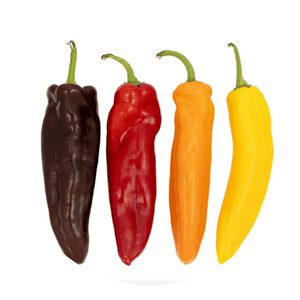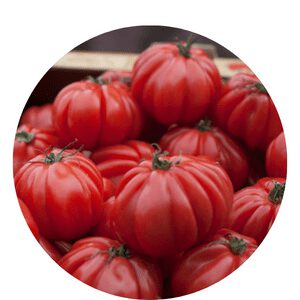How Do I Prepare My Backyard For a Vegetable Garden?
Chappy the gardener has just released a new guide that shows homeowners how to get their backyard ready for a vegetable garden.
The guide includes information on how to choose the right location, what type of soil to use, and what kind of fencing is necessary to keep pests out.
This is the perfect resource for anyone who wants to start growing their own food but isn’t sure where to start.
Backyard Menu
If you want to grow a vegetable garden in your backyard, there are a few things you need to do first.
Why grow a vegetable garden?
There are a number of reasons why you might want to consider growing a vegetable garden.
Perhaps you want to eat healthier, or maybe you’re looking for an activity to do with your family that is both fun and educational.
No matter what your reasons are, vegetable gardening can be a rewarding experience that provides many benefits.
Here are just a few of them:
Vegetables grown in your own garden are fresher and taste better than those you buy at the grocery store.
You can save money by growing your own vegetables – in fact, you may even be able to grow them more cheaply than you can buy them.
Gardening is a great way to get exercise and fresh air.
Vegetable gardens are beautiful additions to any yard or garden, and they can provide hours of enjoyment for people of all ages.
Research your backyard to see what type of soil you have
Most people don’t think about the type of soil in their backyard, but it’s important to know what type of soil you have so you can choose plants that will thrive in your environment.
There are three basic types of soil: sand, silt, and clay.
Sandy soils are light and easy to work, but they don’t hold water or nutrients well.
Silt soils are fertile but can be heavy and hard to work.
Clay soils are the most fertile but also the most difficult to work with.
If you’re not sure what type of soil you have, you can take a soil sample to your local county extension office for testing.
Soil Testing Kits
Not sure what type of soil you have in your garden or yard?
There are many soil testing kits on the market to help you figure out what kind of soil you have and what steps you need to take to amend it.
Soil testing kits typically come with a guide that will help you understand the results, so be sure to read the instructions carefully.
One popular type of kit is the pH kit, which will tell you the acidity or alkalinity of your soil.
Most plants prefer a certain pH level, so if your soil is off from what your plants prefer, you can amend it accordingly.
There are also kits that test for nitrogen, phosphorus, and potassium levels in your soil, as well as organic matter content and water retention.
Amend your soil as needed
In order to have a successful vegetable garden, the soil in your backyard needs to be amended.
This means adding organic matter and nutrients to the soil to make it more fertile.
You can do this by yourself by buying some organic matter, like compost, or you can hire a professional to do it for you.
Either way, it’s important to take care of your soil so that your vegetables will thrive.
If I want to prepare my backyard For a vegetable garden I'll need to till the soil Add some compost or manure And maybe some fertilizer Then I can start planting Seeds for tomatoes, peppers, cucumbers Lettuce, cabbage, broccoli, spinach Carrots, peas, beans, squash I can't wait to harvest all the vegetables That will grow in my backyard garden!
Chappy The Gardener
How do I start composting in my yard?
Composting is the natural process of breaking down biodegradable materials into a rich soil amendment.
Yard waste and food scraps are two of the most common compost ingredients.
By starting a compost pile in your yard, you can recycle these materials instead of sending them to the landfill.
Not only is composting good for the environment, but it also creates a nutrient-rich soil amendment that can be used to improve your garden or landscape.
The first step in starting a compost pile is to choose a location.
The pile should be situated in an area that receives plenty of sunlight and has good drainage.
You will also need to assemble some basic supplies, including a shovel, pitchfork, wheelbarrow, and bin or container to hold the compost.
The next step is to gather some materials for your compost pile.
The following materials are needed to start a compost pile: Grass, leaves, and plant trimmings from your yard.
A handful of dry manure, sawdust or wood chips.
A handful of kitchen scraps such as coffee grounds, egg shells and vegetable peels.
Once you have your materials, the next step is to get the pile going.
You can use a shovel to add the material to the pile, but it is best to add one layer of material at a time.
It helps prevent clumping and keeps the pile from becoming too compacted.
Depending on where you live, it will take anywhere from 3 to 6 months for your compost pile to reach maturity.
When you see the first signs of decomposition (worms, flies and maggots) start to appear in the pile, it is time to add more material.
Choose the vegetables you want to grow
The best vegetables to grow in your backyard garden are those that you and your family enjoy.
By choosing the vegetables you want to grow, you can prepare your backyard garden specifically for your needs.
If you have a small yard, choose smaller vegetables like lettuce or tomatoes.
If you have a larger yard, consider growing taller vegetables like broccoli or corn.
The most important part is to make sure you are growing the vegetables that will get used, so nothing goes to waste!
Vegetables that grow well in partial sun
If you are thinking about starting a vegetable garden, but don’t have the time or space for a full sun garden, you may want to consider planting vegetables that grow well in partial sun.
By preparing your backyard for a vegetable garden using these tips, you can make the most of the space you have and enjoy fresh fruits and vegetables all summer long.
To start, figure out how much sunlight your yard receives during the day.
The sunniest spot in your yard should get at least 6 hours of direct sunlight each day.
If your yard doesn’t receive that much sunlight, don’t worry – there are plenty of vegetables that can be grown in partial sun.
One of the best ways to prepare your backyard for a vegetable garden is to amend the soil with compost or manure.
Lettuce
Lettuce is a leafy green vegetable that is typically grown in gardens.
It is a cool weather crop that can be planted in the spring or fall.
Lettuce can also be grown in partial sun, which means that it can be grown in an area that receives direct sunlight for only part of the day.
Spinach
Spinach is a cool-season crop that can be grown in partial sun.
It is a great choice for gardeners in areas with hot summers, since it can tolerate some heat.
Spinach grows best in soil that is rich in organic matter and has a pH of 6.5 to 7.5. It can be planted in early spring or late summer/early fall.
Swiss chard
The Swiss chard plant is a leafy vegetable that can be grown in partial sun.
This plant does well in cooler climates and can tolerate light frost.
The leaves are dark green and have a slightly bitter flavor.
Swiss chard is a good source of vitamins A and C, as well as fiber.
Kale
If you’re looking for a hearty green to plant in your garden, kale is a great option.
Kale grows well in partial sun, so it’s a good choice if you don’t have a lot of sunlight available.
Kale is also tolerant of cold weather, so it can be planted early in the spring or late in the fall.
And if you’re worried about pests, kale is one of the most pest-resistant plants around.
So why not give kale a try?
Arugula
Arugula is a unique leafy green that can tolerate partial sun conditions.
In fact, arugula actually grows better in partial sun than it does in full sun.
This means that gardeners who have limited sunlight exposure can still grow this nutrient-rich vegetable.
Arugula is a cool weather crop, so it can be planted in early spring or late summer/early fall.
Tomatoes
Tomatoes are a popular garden vegetable because they grow well in a variety of conditions.
One condition that tomatoes thrive in is partial sun.
In fact, many gardeners prefer to plant their tomatoes in an area that receives partial sun rather than full sun.
This is because the plants will still produce fruit even if they do not get as much sunlight as other vegetables.
Tomatoes need at least six hours of direct sunlight per day to produce fruit.
If the plant does not receive this amount of sunlight, the fruit will be small and may not taste as good.
However, if the plant receives between four and six hours of direct sunlight per day, it will still produce a good crop of tomatoes.
The best way to determine how much sun your tomato plants need is to look at the leaves.
Vegetables that don't need a lot of maintenance
There are some vegetables that you can grow without a lot of maintenance.
They include lettuce, spinach, carrots, and beets.
These vegetables do well in cooler weather, so they are a good choice for early spring or late fall gardens.
You can plant them in your garden or in containers on your patio.
Vegetables that can be grown in a small backyard garden
Believe it or not, you don’t need a big yard to grow your own vegetables.
By following a few simple tips, you can grow a bounty of healthy veggies in even the smallest backyard garden.
The best part is, you can pick and choose which veggies you want to grow, so you can tailor your garden to your own tastes.
Some of the best vegetables for small backyard gardens include tomatoes, peppers, zucchini, cucumbers, and lettuce.
All of these plants are relatively easy to grow and don’t require a lot of space.
If you’re looking for something a little bit more challenging, consider growing eggplant or broccoli.
These plants can be a bit more finicky, but with a little bit of care they can thrive in even the smallest garden.
When planning your garden, make sure to choose vegetables that will mature at different times.
Vegetables that are easy to harvest
There are many vegetables that are easy to harvest.
Some of these vegetables include peas, beans, and corn.
These vegetables are easy to harvest because they grow on vines or bushes that you can easily pick from.
Other vegetables that are easy to harvest include broccoli, cabbage, and cauliflower.
These vegetables grow in heads or clusters that you can cut from the plant.
Vegetables that will give you the most bang for your backyard
Eating healthy doesn’t have to break the bank.
In fact, there are a few vegetables that will give you the most bang for your buck. Here are five of them:
1. Potatoes: A medium-sized potato contains about 4 grams of protein and is a good source of fiber, potassium, and vitamin C.
2. Tomatoes: One medium-sized tomato has about 1 gram of protein and is a good source of fiber, potassium, and vitamin C.
3. Spinach: A cup of cooked spinach has about 5 grams of protein and is a good source of fiber, iron, magnesium, potassium, and vitamins A, C, E, and K.
4. Sweet Potatoes Sweet potatoes are a great source of vitamin A, C, and E and have about 6 grams of protein in one medium-sized sweet potato. They are also a good source of fiber, potassium, vitamin B6, and manganese.
Which vegetables are best suited for your climate?
There are many vegetables that can be grown in your climate, but some vegetables are better suited than others.
For example, if you live in a colder climate, you will want to grow vegetables like kale, broccoli, and cabbage, which can withstand colder temperatures.
If you live in a warmer climate, you will want to grow vegetables like tomatoes and cucumbers, which need more warmth.
Plan your garden layout
When planning your garden layout, first consider the size of your backyard.
You want to make sure to choose a layout that will fit comfortably in the space you have available.
Once you have determined the size of your garden, start by sketching out a rough idea of what you would like your garden to look like.
Next, decide which vegetables you would like to grow.
Make sure to choose vegetables that will grow well in your climate and that you will enjoy eating.
Once you have chosen your vegetables, map out where each one will go in your garden.
Finally, be sure to include plenty of space for pathways so you can easily walk through your garden.
If possible, try to locate your garden in a spot that gets plenty of sunlight.
By following these simple tips, you can create a beautiful and functional vegetable garden that will be enjoyed for years to come!
Start planting!
Spring has sprung and it’s time to start planting your vegetable garden.
If you’re like me, you probably have some old favorites that you always plant, but this year why not try something new?
There are so many different kinds of vegetables to choose from, you’re sure to find something that will suit your taste.
One great way to mix things up is to plant a variety of colors.
Not only will it look pretty, but it will also be fun to see which vegetables are ready to harvest first.
Another thing to consider is the size of your garden.
If you have a small yard, then choose compact varieties of vegetables that won’t take up too much space.
No matter what kind of vegetables you choose, be sure to read the instructions carefully so you know how much water and sun they need.
In conclusion, by following the simple tips above, you can prepare your backyard for a vegetable garden.
If you have any questions, feel free to ask them in the comments below, and Chappy the Gardener will be happy to help.
Thanks for reading!
Click To Grow
Helps Us Grow – Share If You Like


















